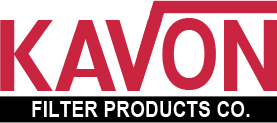 Kavon Filter Products Co.
Kavon Filter Products Co.5022 Industrial Road
Farmingdale, New Jersey 07727 USA
Toll-Free Phone: 1(877)KAVON US (528-6687)
Phone: (732)938-3135
Fax: (732)938-7540
Email: kavonfilter@optonline.net
Website: www.kavonfilter.com
 Kavon Filter Products Co.
Kavon Filter Products Co.CONDUCTIVE (Anti-Static) AND NON-CONDUCTIVE
Conductive (Anti-Static)
Fiber |
N/A Multifilament Stainless Steel Polyester |
Retention |
N/A 35 microns |
| Porosity1 | N/A 20 - 30 CFM |
Weave |
N/A Satin |
Acids |
N/A Good resistance to most mineral and organic acids except high concentrations of nitric, sulfuric and carbolic acids. |
Alkalis |
N/A Good resistance to weak alkalis and moderate resistance to strong alkalis at low temperatures. Strong alkalis at high concentrations and temperatures dissolve polyesters. |
Oxidizing Agents |
N/A Good resistance to most oxidizing agents. |
Organic Solvents |
N/A Excellent to most organic solvents, but unsuited for some phenolic compounds and affected by cyclohexanone at 313 ºF. |